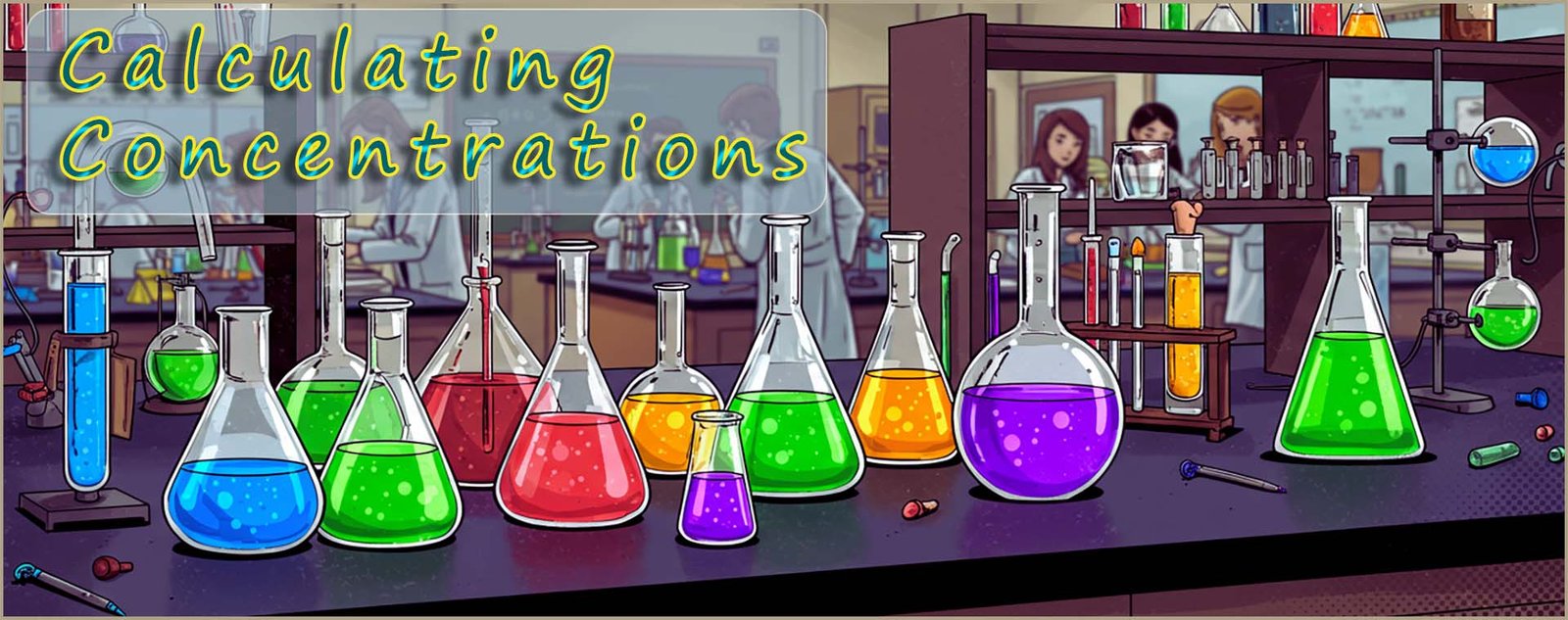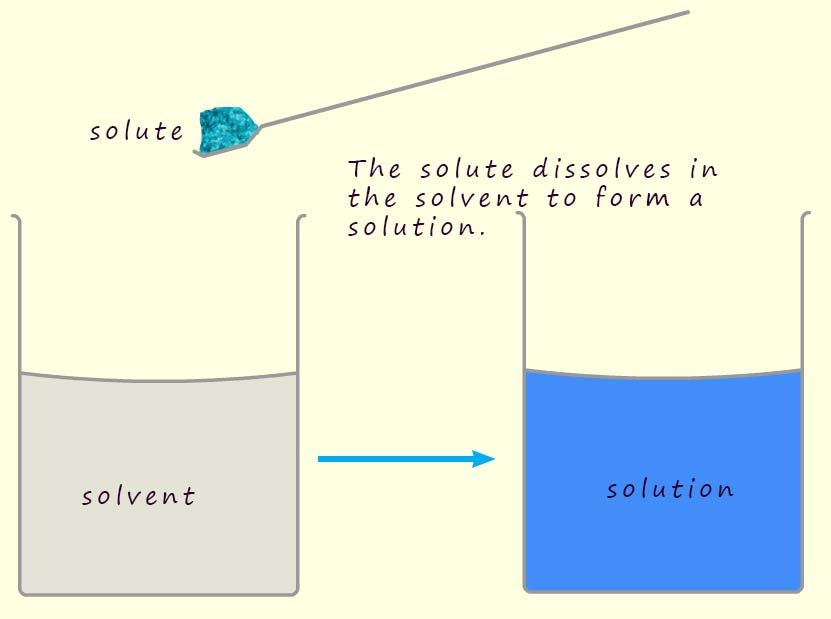

Higher tier

Many chemical reactions are carried out in aqueous solutions, that is solutions formed when a solute is dissolved in water.
In order to calculate the
masses of the reactants and products
that take part in these chemical reactions we need to know the
concentration of these solutions.
Remember a solution is made by dissolving a substance, the solute
in a solvent. The solvent is usually water and these solutions would then be called aqueous solutions.
When we talk about the concentration of a solution
we mean how much solute has been dissolved in a
certain volume of water (the solvent).
As an example consider the solution made by dissolving the salt sodium chloride in water.
Now the salt sodium chloride has the chemical formula NaCl. The relative atomic mass (Ar) of sodium is 23 and the Ar of chlorine is 35.5.
So the relative formula mass (Mr) of sodium chloride (NaCl)
= 23 + 35.5 = 58.5
So 1 mole of sodium chloride = 58.5 grams.
Most people in everyday life measure volumes in litres but this is not the SI unit used in science. The unit used for measuring volumes in science is the decimetre cube (dm3). A dm3 is the same as 1 litre or 1000cm3 or 1000ml, these volumes are all exactly the same so don't get confused!
The units of concentration will vary and will depend upon the units used to measure the mass or amount of the solute; the substance which is dissolved. You need to be confident in using different units for concentrations e.g.

The concentration of a solution is often expressed in 2 ways e.g.
If one mole or 58.5g of sodium chloride (NaCl) is added to a measuring cylinder with a volume of 1 dm3 or 1 litre and enough water is then added to completely dissolve the sodium chloride to form a solution with a volume of 1 decimetre cubed (1dm3) you can work out the concentration of this solution using the formula shown in methods 1 and 2 below.

 The only difference between the two concentrations of the sodium chloride solution above are the units.
The only difference between the two concentrations of the sodium chloride solution above are the units.
Measuring the concentration of solutions in moles per decimetre cubed is perhaps a more common unit and is the one you are most likely to see on bottles in the science lab; for example you may see bottles of acids or alkalis such as hydrochloric acid or sodium hydroxide; as shown in the image; with labels that say for example-"hydrochloric acid 2M"- The 2M refers to the concentration of the acid, its concentration is 2 moles per decimetre cubed.

Let's look at some examples of the units that can be used to measure the concentration of a glucose solution. Now glucose is a simple sugar molecule which has the molecular formula C6H1206, its relative formula mass or relative molecular mass (Mr) is 180.
a. What is the concentration in g per dm3 of a glucose solution made by dissolving 30g of glucose to give a solution with a total volume of 500 ml?
To work out the concentration of this solution you will use the formula below to solve this problem since the mass of glucose dissolved is in grams:
The unit for volume asked for in the question is decimetres cubed (dm3) so we need to divide the 500ml volume by 1000 to convert it into dm3. This gives us:
So the concentration of this glucose solution is 60g/dm3, that is 60g per decimetre cubed.
b. What is the concentration in mol per dm3 of a glucose solution made by dissolving
30g of glucose to give a solution with a volume of 500 ml?
This time it’s the same problem as above but the units are different, the units of concentration this time needs to be in mol (short for moles) per dm3.
First thing to do here to answer this question is to calculate how many moles of glucose we have by using the formula below:
So simply substitute the number of moles into the formula below, remembering that the volume must be in dm3
Review your understanding of limiting factors by clicking or dragging the statements below and then place them in the true or false bins. Press the check button when your done.
Drag each statement into the correct bin, or tap a statement then tap a bin. Press the check button when your done.
In the worked examples above the mass or the number of moles of solute dissolved in a given volume were used to calculate the concentrations of solutions; however the formulae used above can obviously be arranged to calculate an unknown volume or the mass of a solute which dissolves. All that is needed is to simply rearrange the formula as shown below to calculate an unknown volumes (v) or the number of moles (n) of a solute that dissolves:

You should be able to use these formula to calculate either concentrations, volumes or the number of moles of a particular solute that dissolves, you should take care that you use the correct units. Questions in your exam may have volumes in ml or cm3 but you should remember to change these into dm3. The only way to ensure you can successfully answer this type of question is to complete a few practice problems- so what are you waiting for; click the link below or try the practice below:
Work out the concentration. Give your answer to 2–3 s.f.
